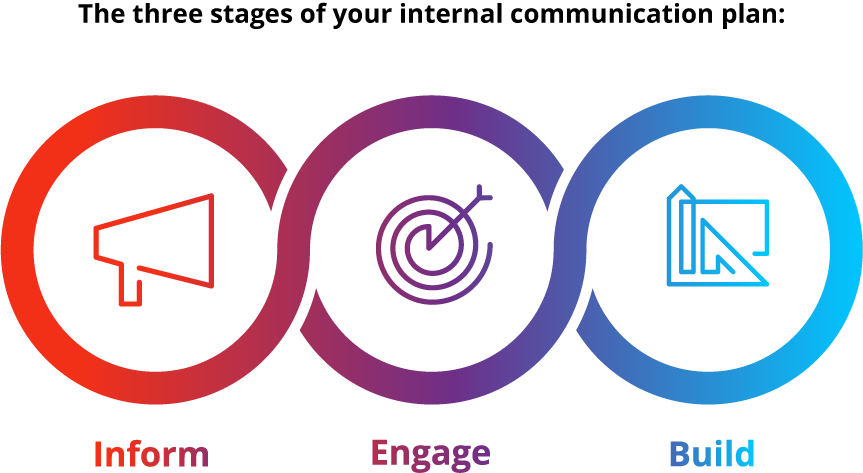The person at the center:
internal communication empowers the sense of group
3 steps to engage the employees and enhance every company project
Communication is not what I say, but what you get.
(Thorsten Havener)
In the last few years, the working world changed fastly, adopting new technologies, digital tools and processes which get better the quality of the commitment. An example comes from the new flexible working methods, that push and support employees and teams to do their work by leveraging the opportunity of the smart working in order to create active and remote collaboration.
The evolution of working method needs a new way to communicate, with the aim to expand the “experience” from the customer to the employee.
The sense of belonging to employees towards the company vision and mission is a crucial factor to build a winning brand identity capable of supporting this kind of evolution.
At the heart of internal communication are people, the essential elements of a company.
This statement extends the scope of internal communication from an essential instrument for the fluidity of collaborative processes among colleagues to a crucial step to enhance the sense of group and the employee’s acknowledgement.
In this scenario, it is essential to understand the roles and process changes. The internal communication, indeed, is no longer a way to communicate something at a top-down level, but it becomes an “institutional and respected” instrument that allows every company team to share messages in a cross and proper way. Sharing information is no longer a vertical message, but a horizontal message.
Moreover, this is the moment where evolution and changing need new strategies and techniques to share content, starting from the company’s objectives and the features. That is why it becomes essential to create a Communication Plan based on both a content analysis and a systematic and well-structured spread.
The importance of analysis for the internal communication plan
During the analysis, we gather all useful elements for the comprehension of the project and then for the “set-up” of operational model’s activities.
Indeed, the analysis allows finding who is involved in the project and how it will be impactful on people.
In the following phase, it is crucial to create an identity in order to better communicate with our target.
There are two or more expressions which help our communication to improve the comprehension and enhancement of the content.
The first one is the visual, formed by iconographies, images, signs and landmarks. The second one is semantic, formed by keywords, tone of voice and idioms, which help people to understand the message.
How can you structure a winning spread phase for your internal communication plan?
The analysis comes first the sharing phase, and it may be in different methods. For this analysis, we focus on a structured strategy split into three steps: informing, engaging and doing.
Informing
“Informing” allows sharing key messages about the project to the target. Thanks to the language we built during the analysis, it is possible to develop specific storytelling for initiatives, goals and processes related to the activity.
In the following phase, there is both the development of content and the selection of the best channels, like DEM, infographics, videos, podcasts, messages on the company’s intranet and outdoors.
Engaging
“Engaging” means to make interesting and understandable information for the audience. In this case and engaged employee should feel an active member of the project.
For this reason, activities like workshop, design thinking, photo and video shooting are useful to create a concert “engagement” of employees.
By these activities, you can find ambassadors: people who become a sponsor of the project through the last phase of the communication plan.
Doing
This last phase is perhaps the most sensitive because it is when ambassadors and the rest of the company start running the project independently, with the only presence of people who must monitor progress and effectiveness of the project.

In conclusion, if we pay the necessary attention to the method of “informing, hiring, doing” for the internal communication, it will allow us to develop effective and valuable strategic business projects for the entire corporate population.

 7 January 2020
7 January 2020

